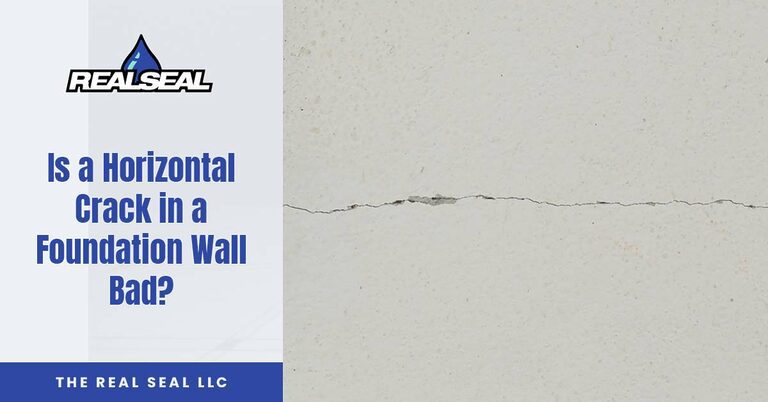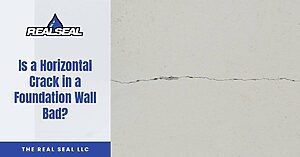Have you noticed an unsightly horizontal crack on your home’s foundation wall? We hate to be the bearers of bad news, but a horizontal crack in a foundation wall usually indicates structural damage. However, the good news is that it can probably be repaired. In this article, you’ll learn all about horizontal cracks, what causes them, how they are fixed, and more.
Is a Horizontal Crack in a Foundation Wall Bad?
Horizontal cracks in foundation walls are indeed a cause of concern. There are a number of reasons why this type of crack may occur–but in most cases, it indicates a serious problem with the structural integrity of the building.
One of the main reasons why horizontal cracks are so concerning is that they can indicate pressure pushing against the foundation wall. This pressure might come from soil, water, or other external factors pushing against the foundation. Over time, this pressure can cause the wall to weaken and crack. In some cases, horizontal cracks may also indicate that the foundation is settling or shifting, leading to serious structural issues.
Another reason why horizontal foundation cracks are so concerning is that they allow moisture to enter the building. This moisture can cause damage to the structure, as well as lead to the growth of mold and mildew. Additionally, moisture entering through the foundation can damage any items that are stored in the basement or crawl space.
If you notice a horizontal crack in your foundation, it is essential to take action as soon as possible. This may involve consulting with a structural engineer or foundation repair specialist to assess the severity of the problem and recommend the appropriate solutions.
Causes of Horizontal Cracks in Foundation Walls
Several factors can cause horizontal cracks to form in a foundation wall, some of which include the following:
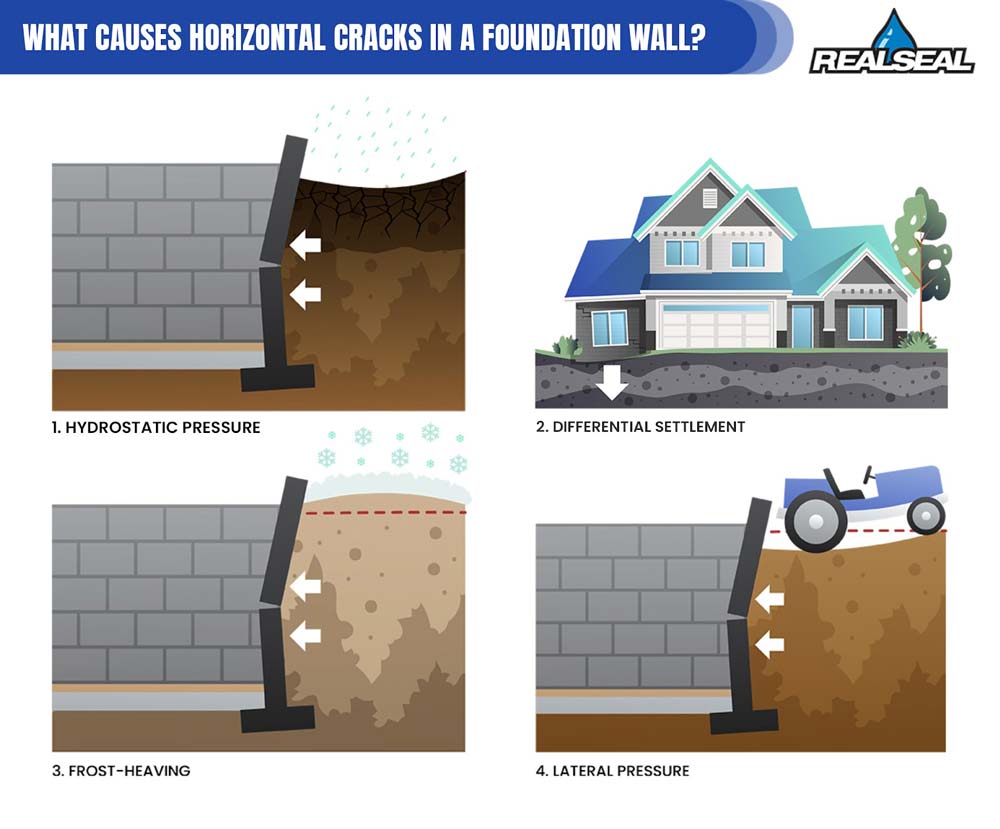
- Hydrostatic pressure
- Differential settlement
- Frost heave
- Lateral pressure caused by something heavy parked next to the foundation
Hydrostatic pressure is one of the most common causes of horizontal cracks in foundation walls. It builds up when water accumulates around the foundation and cannot drain off of it. Hydrostatic pressure pushes against the walls, and when this pressure becomes too much for the foundation to bear, it can result in horizontal cracks forming in the walls. The foundation wall may even bow inward. For more information, see our article on Hydrostatic Pressure In Your Basement.
Frost heave is another common cause of horizontal cracks in foundation walls, especially in areas with colder climates. It occurs when water in the soil freezes and expands, causing the soil to push against the foundation and ultimately causing the walls to crack.
Lateral pressure caused by something heavy parked next to the foundation is another factor that can cause horizontal cracks. When a heavy object (such as a vehicle) is parked next to the foundation for an extended period, it can change the pressure distribution on the soil and cause the walls to crack horizontally.
Differential settlement is also a common cause of horizontal cracks in foundation walls. This occurs when the soil under the foundation settles or shifts unevenly, causing portions of the foundation to move in different directions. When this happens, horizontal cracks may form in the walls due to the stress being placed on them.
Repair Options for Horizontal Cracks in a Foundation Wall
Several options are available for repairing horizontal cracks in a foundation wall. Each method has advantages and disadvantages; the most effective depends on the situation. Here are four common methods for addressing horizontal foundation wall cracks:
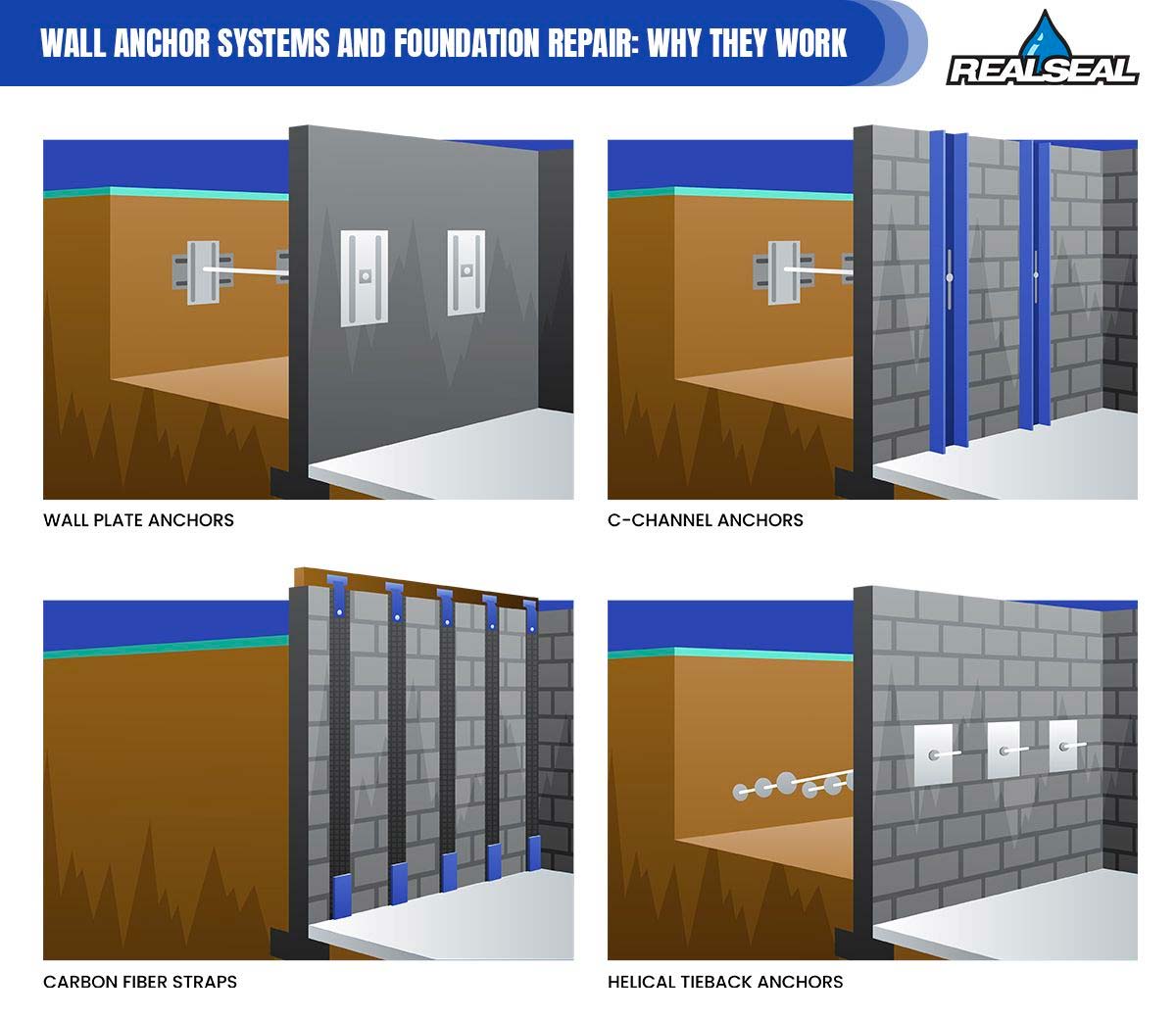
- Wall Plate Anchors – This method uses steel anchors that are installed through the foundation wall to the soil outside. The wall plate anchors are then tightened to provide force against the wall and prevent further movement or cracking. This method is most effective for moving a foundation wall back into place.
- C-Channel Wall Anchors – These anchors are installed by first drilling holes into the wall at the desired location. The anchor is then inserted into the hole and secured by tightening the bolt or screw. Next, the c-channel is placed onto the anchor and secured in place by tightening the bolts or screws on the sides of the channel. This solution is often used for cinder block walls where Wall Plate Anchors would not be as effective.
- Carbon Fiber Wall Straps – This solution involves installing carbon fiber straps onto the cracked portions of the wall using epoxy. The straps reinforce and strengthen the wall, preventing the cracks from expanding further. This method is particularly effective for bowing walls, and the installation process is quick and easy.
- Helical Wall Anchors – This technique involves installing helical anchors into the soil outside the foundation wall, which are then tightened to provide horizontal force to the wall. The anchors are then covered with a steel plate bolted to the foundation wall. This method is ideal for foundations and walls that are shifting or sliding.
Tips on How to Help Prevent Horizontal Cracks in Your Foundation Wall
Foundation problems–including cracks in foundation walls–can be a nightmare for homeowners and lead to significant expenses if they are not addressed promptly. Fortunately, homeowners can take several preventive measures to avoid such problems. Note that most of these involve controlling groundwater around the foundation. This is because most foundation issues are caused by excess moisture in the soil.
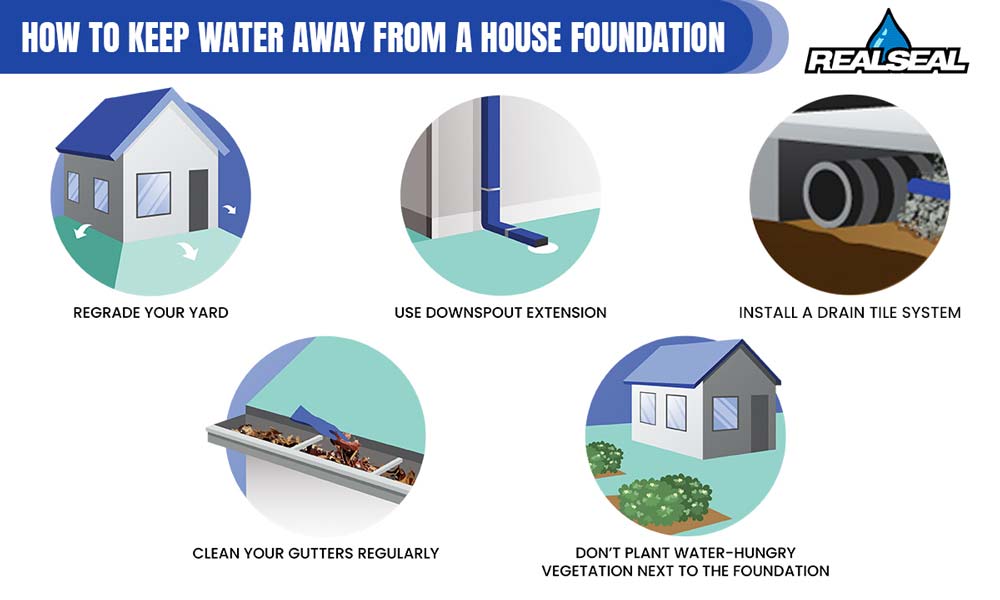
- Regrade your yard – This involves leveling the soil around your home to ensure that water drains away from the foundation instead of pooling around it. Water pooling around foundations can weaken your foundation and cause structural damage.
- Install downspout extensions – These extensions are designed to divert rainwater from the gutters away from the home’s foundation. By channeling water at least 15 feet away from the foundation, downspout extensions can help to prevent water from damaging the foundation.
- Clean gutters regularly – Gutters that are clogged with debris can cause water to overflow, leading to water buildup near the foundation. Over time, this can cause the soil to weaken and compromise the structural integrity of the foundation.
- Install a drain tile system – Drain tile systems collect excess groundwater and channel it away from your home’s foundation.
- Keep trees away from your foundation – Some trees have root systems that are as large as their canopies. If these roots invade the ground under the house and start pushing against the foundation, they can cause structural damage. With this in mind, it’s best to keep trees at least 15 feet away from the foundation.
If you’re in Chicagoland and concerned about a horizontal crack in your foundation wall, contact The Real Seal today to schedule a foundation evaluation and receive a free repair estimate.
